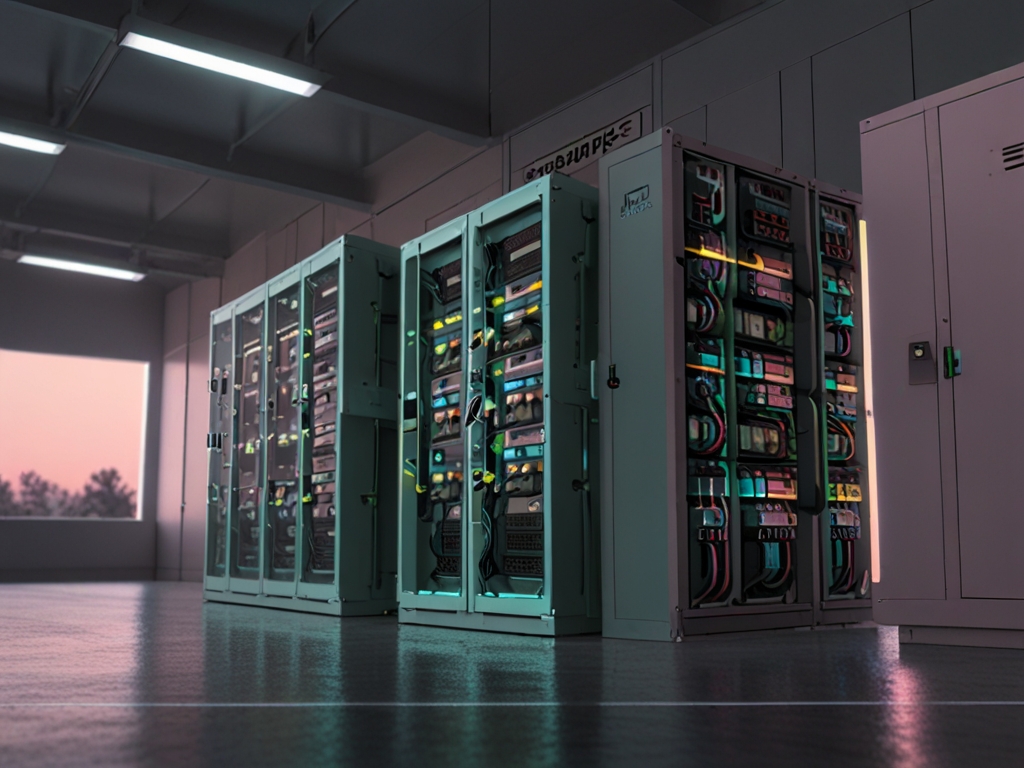
AGI in two years? Maybe, but don't expect a flood—just a trickle of units, each needing a gigawatt data center!
Date: 2025-05-12 12:10:46 | By Eleanor Finch
AI's Next Leap: Hardware Bottlenecks and the Race for Efficiency
In the thrilling world of artificial intelligence, the race to achieve Artificial General Intelligence (AGI) is heating up. But as we edge closer to this monumental milestone, a surprising challenge looms large: the sheer physical infrastructure needed to power these superintelligent machines. Experts warn that even if AGI becomes a reality in the next two years, the hardware limitations could significantly slow down its widespread adoption. Let's dive into the intricacies of this high-stakes game, where silicon photonics and optimized chips might just be the key to unlocking AI's full potential.
The Gigawatt Dilemma: Powering the Future of AI
Imagine a world where each AGI unit requires an entire gigawatt data center to function. That's a colossal amount of energy—enough to power a small city. According to industry insiders, we're nowhere near having enough of these mega-centers to support a fleet of AGIs. "Even if we could build them, the environmental and financial costs would be astronomical," notes Dr. Elena Rodriguez, a leading AI researcher. The numbers are staggering: a single gigawatt data center could cost upwards of $1 billion to construct, not to mention the ongoing operational expenses.
Silicon Photonics: The Hardware Revolution We Need
But there's hope on the horizon. Experts believe that advancements in hardware, particularly in the realm of silicon photonics and optimized chips, could offer a 100x improvement in efficiency. "We're talking about reducing the power consumption from a gigawatt to just 10 megawatts," says Dr. James Kim, a hardware engineer at a leading tech firm. This leap forward isn't just about scaling down; it's about rethinking how we build and interconnect our systems. "By using better materials and more efficient designs, we can achieve what was once thought impossible," Kim adds.
The Co-Evolution of Software and Hardware
The next decade promises to be a golden era for AI, with software and hardware evolving in tandem. While software advancements have historically outpaced hardware, the current landscape suggests a more balanced approach. "We're entering a period where both sides need to push forward together," explains Dr. Sarah Lee, an AI strategist. This co-evolution is crucial, as software alone can't overcome the physical constraints of hardware. The recent acquisition of Mellanox by Nvidia for $8 billion is a testament to this synergy. Mellanox, an Israeli company known for its high-speed interconnects, has become a linchpin in Nvidia's strategy to dominate the AI hardware market. "Without Mellanox, Nvidia wouldn't have the full-system capabilities that set them apart from competitors like AMD and Intel," Lee points out.
As we look to the future, the implications of these hardware challenges are profound. The end of the mobile and traditional cloud revolutions has left a void that AI is poised to fill. "We're at the beginning of a giant revolution in AI, and it's all powered by hardware," says Dr. Rodriguez. The market is already reacting: Nvidia's stock has surged 50% in the past year, driven by its pivotal role in AI infrastructure. Meanwhile, startups like Graphcore and Cerebras are pushing the boundaries of chip design, promising even more efficient solutions.
But what does this mean for investors and enthusiasts? For one, it's a reminder to keep an eye on hardware developments. "The next big breakthroughs in AI will come from companies that can crack the efficiency code," advises Lee. As the race for AGI heats up, the stakes couldn't be higher. The promise of a world transformed by superintelligent machines is tantalizing, but it's the unsung heroes of hardware that will determine how quickly—and sustainably—we get there.

Disclaimer
The information provided on HotFart is for general informational purposes only. All information on the site is provided in good faith, however we make no representation or warranty of any kind, express or implied, regarding the accuracy, adequacy, validity, reliability, availability or completeness of any information on the site.
 7
7  0
0  AI
AI
Comments (0)
Please Log In to leave a comment.